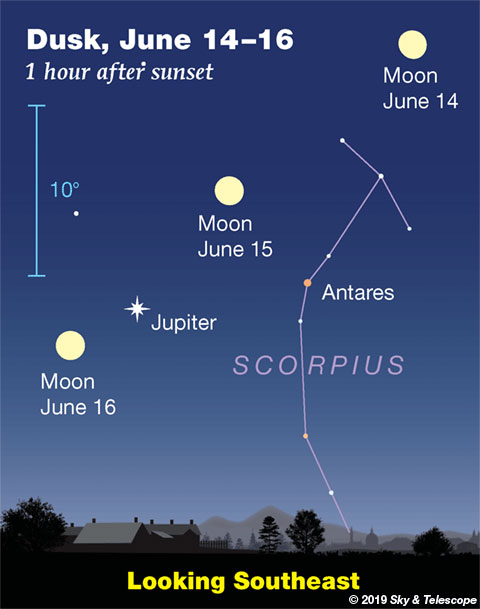
Friday, June 14
• Look far lower left of the Moon in late twilight and after dark for Antares and Jupiter, as shown here.
• The Big Dipper, high in the northwest, now hangs straight down by its handle as the stars come out.
Saturday, June 15
• The bright Moon forms a not-quite-equilateral triangle with Jupiter to its lower left and Antares to its lower right, as shown here. Upper right of the Moon and Antares is Delta Scorpii, not much fainter than Antares. Add it to the triangle and you've got a kite shape.
Think photo opportunity. The triangle is 10° from end to end, so use a moderately long lens. Or even try zooming in with a phone camera braced rock-steady.
Sunday, June 16
• Full "Honey Moon" tonight (exact at 4:31 a.m. Monday morning EDT). By no coincidence the Moon shines near Jupiter, which was at opposition just six days ago. "Full" and "at opposition" both mean "in the direction opposite the Sun" as seen from Earth.
Jupiter, however, is currently 1,670 times farther now, which is why it looks like a tiny dot compared to the Moon — even though it's actually 40 times larger in diameter.
Adding to the panorama are, to their right, fainter Antares and other stars of upper Scorpius, most notably Delta Sco.
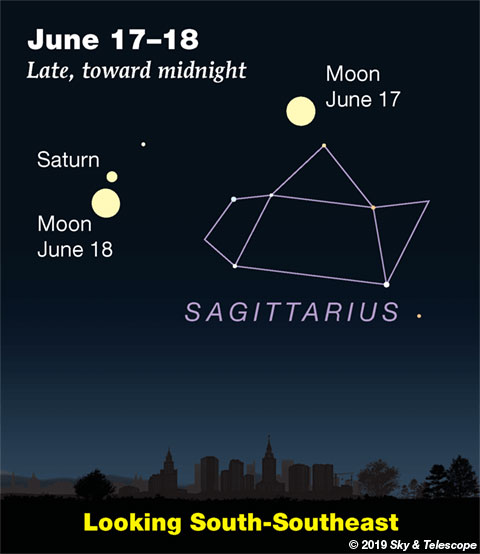
Monday, June 17
• The Moon shines now between Jupiter and Saturn, closer to the latter. Jupiter is upper right of the Moon after dark. Saturn is to the Moon's lower left, as seen here.
Tuesday, June 18
• In bright early twilight, use binoculars to try catching Mercury and Mars just ½° apart low in the west-northwest. Mercury is by far the brighter of the two. Mars is actually fainter now than Pollux and Castor, which glimmer a little more than a binocular field of view to their upper right.
• On the opposite side of the sky after dark, the waning gibbous Moon shines with Saturn, which is 3,450 times farther away.
Wednesday, June 19
• Here it is two days from official summer. But as twilight fades, look very low in the north-northwest for wintry Capella very out of season. The farther north you are, the higher it will appear. You may need binoculars. If you're as far north as Montreal or a Portland (either Oregon or Maine!), Capella is actually circumpolar.
Thursday, June 20
• After dark Vega is the brightest star shining very high in the east. Barely lower left of it is 4th-magnitude Epsilon Lyrae, the Double-Double. Epsilon forms one corner of a roughly equilateral triangle with Vega and Zeta Lyrae. The triangle is less than 2° on a side, hardly the width of your thumb at arm's length.
Binoculars easily resolve Epsilon. And a 4-inch telescope at 100× or more should resolve each of Epsilon's wide components into a tight pair.
Zeta Lyrae is also a double star for binoculars; much tougher, but plainly resolved in any telescope.
Delta Lyrae, a little below Zeta, is a much wider and easier pair, tinted reddish orange and blue.
Friday, June 21
• The solstice arrives at 11:54 a.m. EDT, when the Sun is farthest north for the year and begins its six-month return southward. Official summer begins in the Northern Hemisphere, winter in the Southern Hemisphere. For us northerners, this is the year's longest day and shortest night.
It's also the day when (in the north temperate latitudes) the midday Sun passes the closest it ever can to being straight overhead, and your shadow becomes is the shortest it can ever be at your location. This happens at local apparent solar noon, which is probably rather far removed from noon according to your civil (clock) time.
And if you have a good west-northwest horizon (in mid-northern latitudes), mark very precisely where the Sun sets. In a few days you should be able to detect that it's again starting to set a little south of that point.
• Jupiter's Great Red Spot should transit the planet's central meridian (the line from pole to pole down the center of the planet's disk) around 1:21 a.m. EDT tonight; 12:21 a.m. CDT. Meanwhile Europa, the smallest of Jupiter's Galilean moons, crosses the planet's disk tonight from 11:32 p.m. to 1:57 a.m. EDT, followed closely by its tiny black shadow from 12:04 to 2:32 a.m. EDT.
For timetables of all the Red Spot's transits this month and all the interesting phenomena of Jupiter's moons, see the June Sky & Telescope, page 50.
Saturday, June 22
• Leo the Lion is a constellation of late winter and spring. But he's not gone yet. As twilight ends look due west, rather low, for Regulus, his brightest and now lowest star: the forefoot of the Lion stick figure. The Sickle of Leo extends upper right from Regulus. The rest of the Lion's constellation figure extends for almost three fist-widths to the upper left, to his tail star Denebola, the highest. He's treading down to the western horizon.
________________________
Want to become a better astronomer? Learn your way around the constellations. They're the key to locating everything fainter and deeper to hunt with binoculars or a telescope.
This is an outdoor nature hobby. For an easy-to-use constellation guide covering the whole evening sky, use the big monthly map in the center of each issue of Sky & Telescope, the essential guide to astronomy.

Once you get a telescope, to put it to good use you'll need a detailed, large-scale sky atlas (set of charts). The basic standard is the Pocket Sky Atlas (in either the original or Jumbo Edition), which shows stars to magnitude 7.6.
Next up is the larger and deeper Sky Atlas 2000.0, plotting stars to magnitude 8.5; nearly three times as many. The next up, once you know your way around, are the even larger Interstellarum atlas (stars to magnitude 9.5) and Uranometria 2000.0 (stars to magnitude 9.75). And read how to use sky charts with a telescope.
You'll also want a good deep-sky guidebook, such as Sue French's Deep-Sky Wonders collection (which includes its own charts), Sky Atlas 2000.0 Companion by Strong and Sinnott, or the bigger Night Sky Observer's Guide by Kepple and Sanner.
Can a computerized telescope replace charts? Not for beginners, I don't think, and not on mounts and tripods that are less than top-quality mechanically (meaning heavy and expensive). And as Terence Dickinson and Alan Dyer say in their Backyard Astronomer's Guide, "A full appreciation of the universe cannot come without developing the skills to find things in the sky and understanding how the sky works. This knowledge comes only by spending time under the stars with star maps in hand."
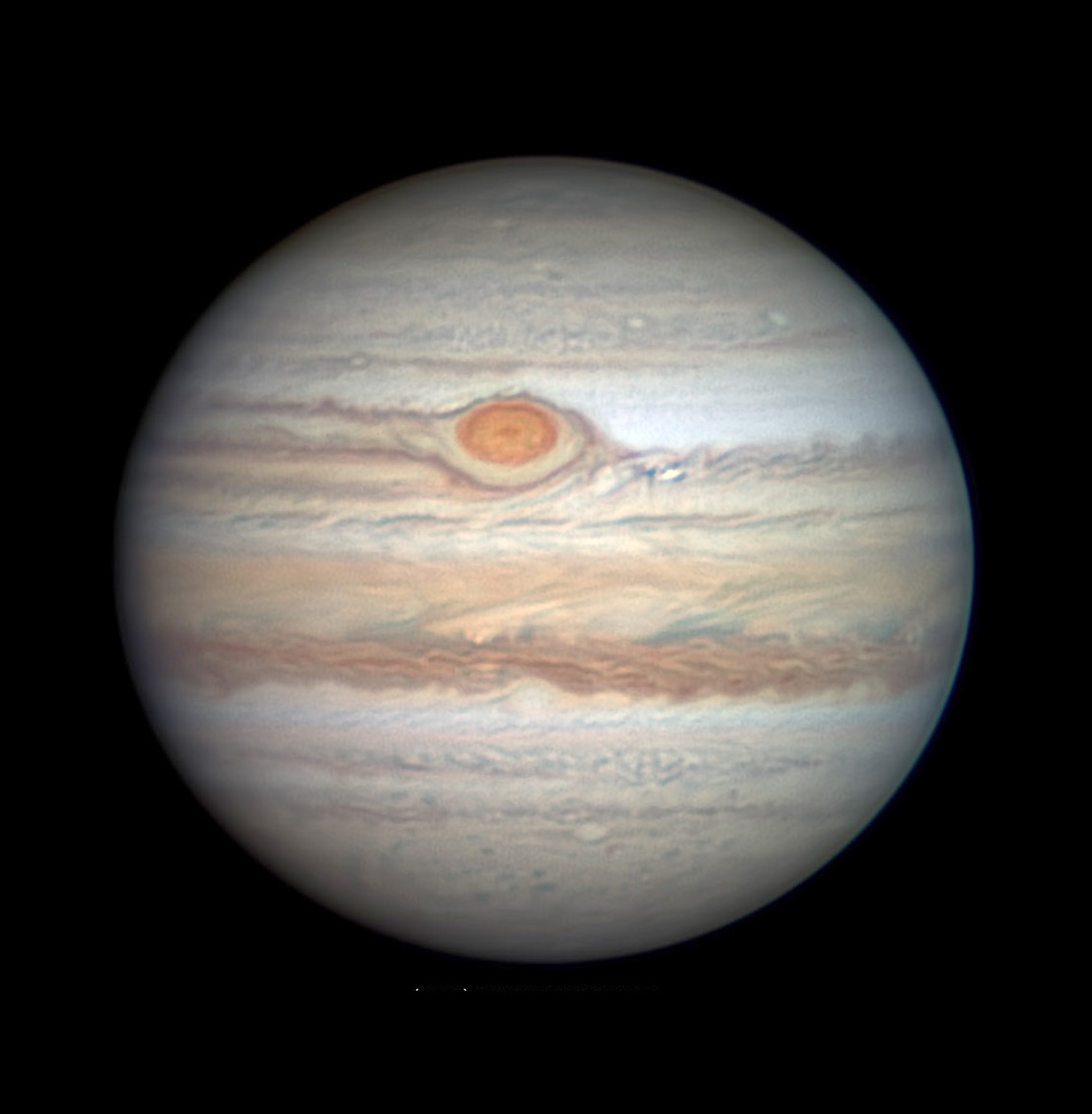
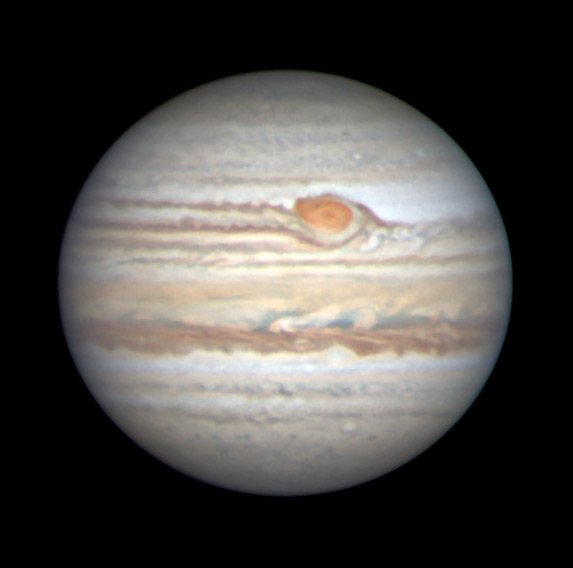
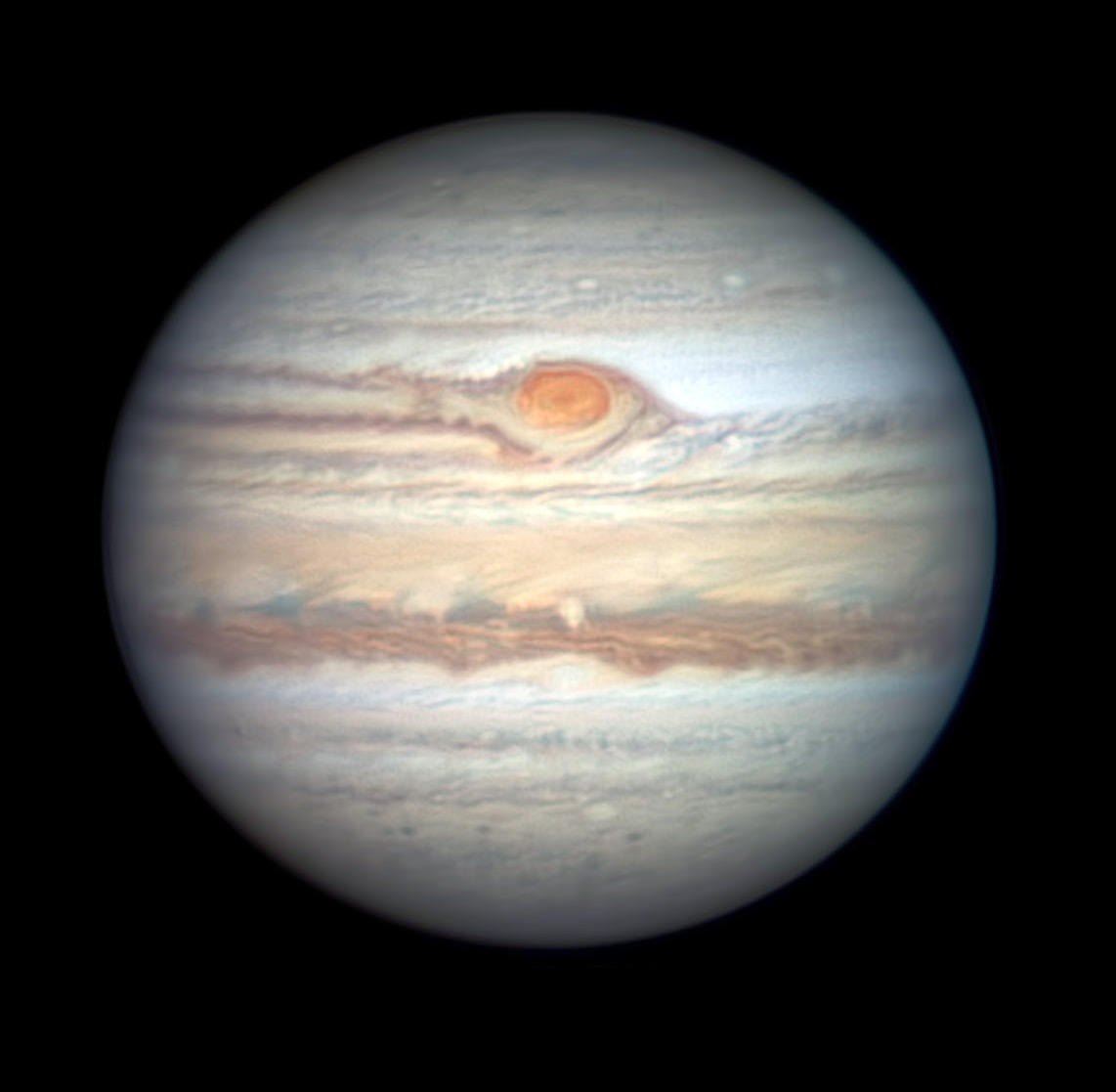
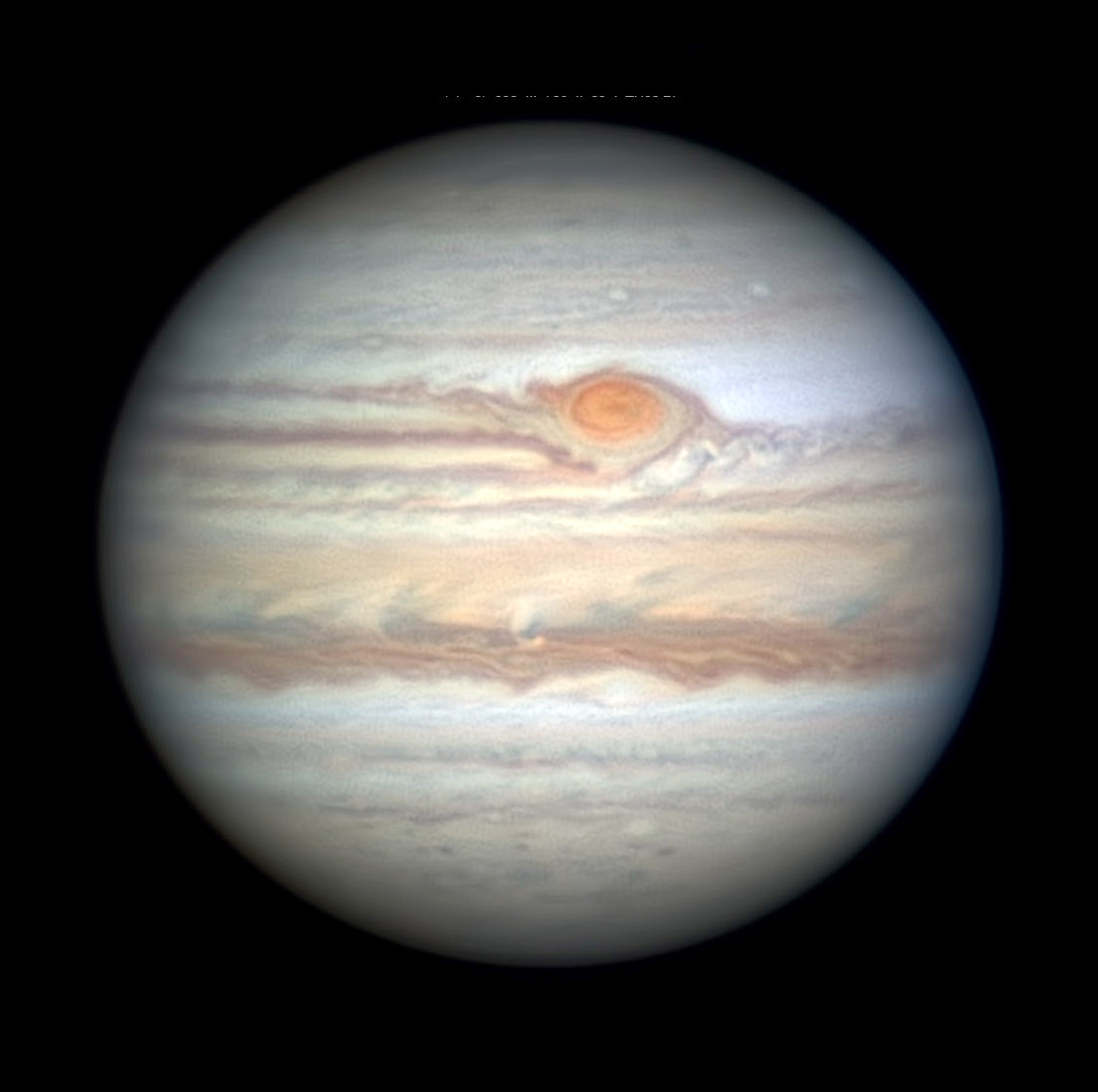
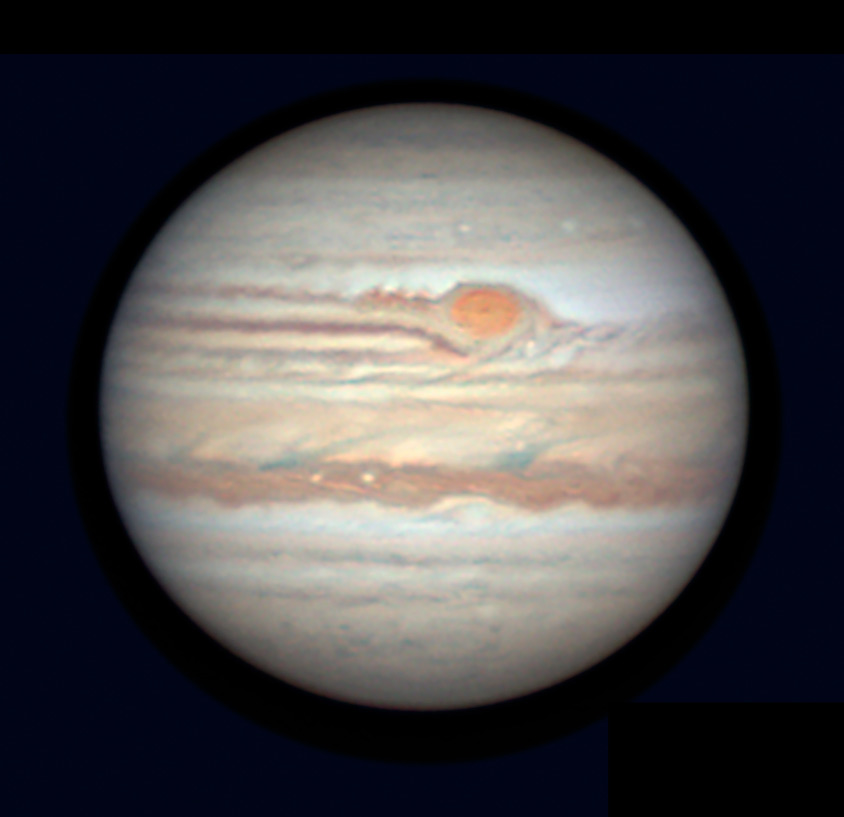
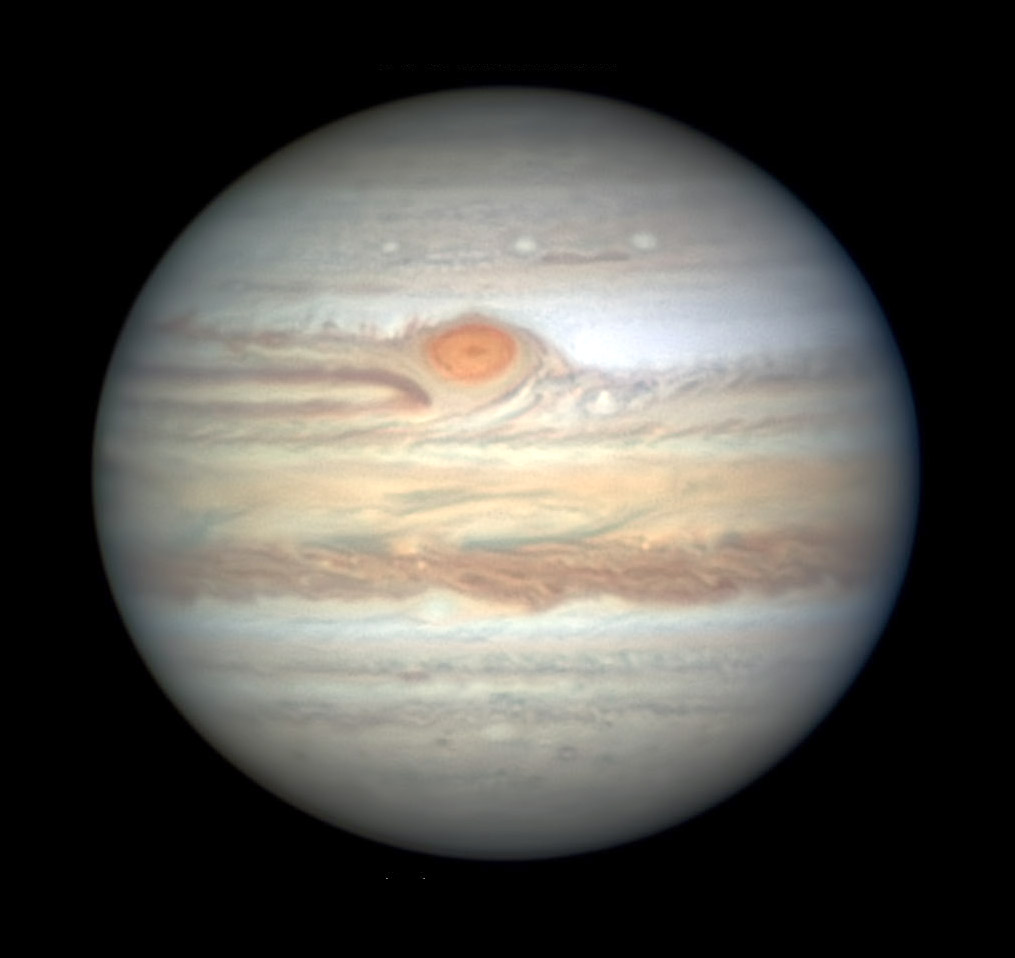
Mercury and Mars pass each other very low in bright twilight. Look for them in the west-northwest about 40 to 60 minutes after sunset. Bring binoculars. Mercury is by far the brighter of the two, fading from magnitude –0.1 to +0.4 this week. Mars is less than an eighth as bright at magnitude +1.8.
On June 14th you'll find Mars 2½° to Mercury's upper left. They appear closest, a mere ½° apart or less, on the June 17th and 18th. After that, Mars moves away to Mercury's lower right.
Pollux and Castor (magnitudes +1.2 and +1.6) twinkle weakly above or upper right of them.
Venus (magnitude –3.8) is very low in the dawn. About 20 minutes before sunrise, scan for it with binoculars a little above the east-northeast horizon.
Jupiter (magnitude –2.6, in southern Ophiuchus) is past its June 10th opposition. It glares in the southeast by late twilight. Antares, much fainter at magnitude +1.0, twinkles 10° to its right or upper right. Jupiter is highest in the south by midnight or 1 a.m. daylight saving time, with orange Antares now to its lower right.
In a telescope Jupiter is 46 arcseconds wide. See Bob King's Jupiter Is Outstanding at Opposition. And, changes continue in and around Jupiter's Great Red Spot.
Saturn (magnitude +0.2, in Sagittarius) rises by the end of twilight. It's the steady, pale yellowish "star" 30° east of Jupiter. Saturn's opposition comes on July 9th.
Uranus is still very low just before dawn.
Neptune (magnitude 7.9, in Aquarius) is well up in the southeast just before dawn begins, lower right of the Great Square of Pegasus. Finder chart.
_________________
All descriptions that relate to your horizon — including the words up, down, right, and left — are written for the world's mid-northern latitudes. Descriptions that also depend on longitude (mainly Moon positions) are for North America.
Eastern Daylight Time (EDT) is Universal Time (UT, UTC, GMT, or Z time) minus 4 hours.
_________________
Audio sky tour. Out under the evening sky with your earbuds in place, listen to Kelly Beatty's monthly podcast tour of the heavens above. It's free.
_________________
“This adventure is made possible by generations of searchers strictly adhering to a simple set of rules. Test ideas by experiments and observations. Build on those ideas that pass the test. Reject the ones that fail. Follow the evidence wherever it leads, and question everything. Accept these terms, and the cosmos is yours.”
— Neil deGrasse Tyson, 2014
______________________
 4
4








Comments
Rod
June 16, 2019 at 7:32 am
mary beth, I enjoyed some good views of Saturn, Jupiter, and the waxing gibbous Moon late Friday night and early Saturday morning, 2330-0100 EDT. At that time it was mostly clear and cool temps near 58F. Some cirrus but not bad viewing using my 90-mm refractor. The Great Red Spot on Jupiter was visible and the moon, Europa just finished a transit, moving around Jupiter in its orbit visible just past the limb. 3 moons visible at Saturn too (Titan, Rhea, and Tethys). Saturn looks promising as it approaches opposition in July. Retrograding in Sagittarius, even with the waxing gibbous Moon I could see a dozen or more stars in the telescope field of view. Without the Moon, e.g. New Moon period, the view would be filled with stars on a clear night, Saturn and ring system, and perhaps 5 moons using my 10-inch telescope. Jupiter is still a great view too. I viewed from 31x power to 179x power magnification. The link is a short report note 🙂
https://1drv.ms/x/s!Ag__n9x2eoQT5kL5F88AYQ7kpuSq?e=bsJTw4
You must be logged in to post a comment.
mary beth
June 17, 2019 at 12:50 pm
Hi Rod! Wow that starry scene in Sagittarius sounds magnificent! Wish you had a camera on your telescope! Glad you’ve had clear weather and got to see all the planetary moons! I am looking forward to Saturn in July - please keep me up-to-date on exact timing! We’ve had some beautiful evenings, the neighbors come and been sit our driveway with snacks and ice tea until almost midnight.... we certainly don’t have dark skies but at least we can see the major things! One of the neighbors is a retired physics teacher and he always shares some good tidbits. Also the ISS has had a few flyovers that were enjoyable!
Your link did not work could you please repost? Hope you have a good week viewing!
You must be logged in to post a comment.
Rod
June 17, 2019 at 4:11 pm
mary beth, thanks. For the moment, I will avoid posting a link for review. Looks like Saturn is at opposition on 09-Jul-19 and at Houston, higher elevation at transit then my location in Maryland. On 09-Jul-19 at Houston, Saturn should be close to 28 degrees altitude and near 142 degrees azimuth close to 11:00 PM local time. Transit near 0124 local time on 10-July-19. Currently we have clouds and likely t-storms in the area tonight and over the next several days. I did plenty of grass cutting and weed whacking - more to come too 🙂
You must be logged in to post a comment.
TenOfSwords
June 16, 2019 at 8:21 pm
A good challenge at this time of year is to see when you can first spot the Pleiades in the morning twilight. Start looking low in the northeast-by-east about 30 minutes before sunrise, with Venus to their lower right. Binoculars will help - and remember that the Pleiades have a declination of 24 degrees 7 minutes north, making them more northerly than the summer solstice Sun.
You must be logged in to post a comment.
You must be logged in to post a comment.